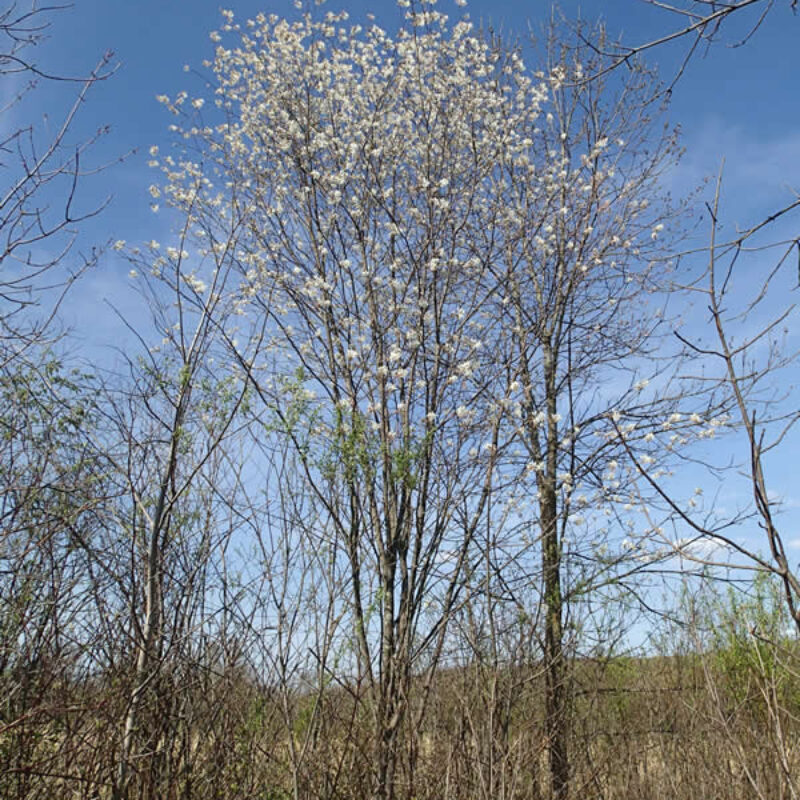JuneberryAmelanchier arborea
There are 16 species of Amelanchier in the world, most are in North America. The fruit ripens in June, is edible and an important food source for wildlife. This large shrub is also called Down Serviceberry because of the whitish downy hairs on the undersides of the leaves. Long ago it was named a 'Serviceberry' because it flowers in spring signaling the ground was ready to be dug for burials in northern climates. Yellow to red fall color.
USDA symbol: AMAR3
General Information
| Plant Type | Tree |
|---|---|
| Height | 15 feet |
| Light Exposure | Sun |
| Soil Moisture | Dry |
| Bloom Color | White |

Tolerances
| Flooding / Inundation Tolerance | Moderate |
|---|---|
| General Resilience | 7 |
| Salt Tolerance | Low |
| Stress Tolerance | Fire Tolerant |
Pollinator Value: Medium
| Bloom Months | May |
|---|---|
| Larval Host of | Bees |
| Specific Pollinators Hosted | Andrena melanochroa |
| Pollinator Benefit | Insect Pollinated, Provides Nectar, Supports Generalists |
Project Planning
| Project Type | Rain Garden, Restoration, Shoreline Buffer, Upland Buffer |
|---|---|
| Coefficient of Conservatism | 6 |
| Herbivore Sensitivity | Low |
| Lifespan | Perennial |
| Rate of Spread | Medium |
| Soil Stabilization | Deep |
| Vegetative Reproduction | Clonal |
Range
| County | Chisago, Cook, Goodhue, Koochiching, Lake, Pine, Washington |
|---|---|
| Ecoregion | Driftless Area, Lake Agassiz Plain, North Central Hardwood Forests, Northern Lakes and Forests, Northern Minnesota Wetlands, Western Cornbelt Plains |
| Approximate Eco Province | Eastern Broadleaf Forest, Laurentian Mixed Forest, Prairie Parkland, Tallgrass Aspen Parklands |
